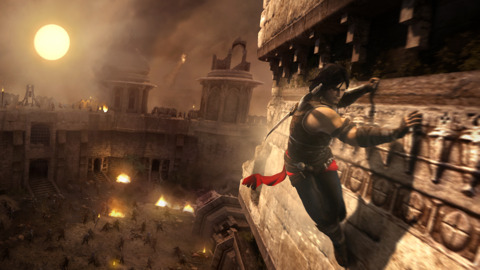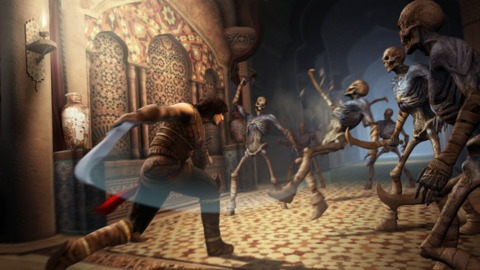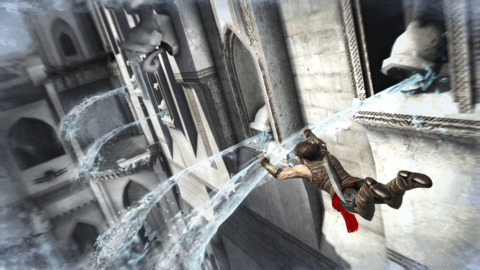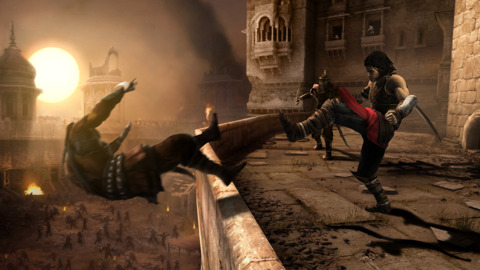
Everything about The Forgotten Sands sort of screams "side story" at you. It takes place sometime between The Sands of Time and Warrior Within, when the still-nameless prince embarks on his travels as a young man and finds his brother Malik's castle under siege by a warring kingdom. After his troops fail to repel the assault, Malik rashly opens a magical seal imprisoning the legendary army of King Solomon that just happened to be hanging out in his palace basement, falsely believing the army once fought for Solomon in a time long past and would return to Malik's aid in the present day. Yeah, good luck with that.
To the great misfortune of Malik and his kingdom (but the surprise of no one), it turns out that army was created to destroy Solomon. Once free, the horde is clearly none too happy about its millennium of captivity and sweeps across the castle turning everyone (save Malik and the prince, conveniently) into sand. It is, of course, up to the two brothers to fight back this ancient curse and find some way to stuff it back into its prison before the credits roll. This premise acceptably justifies the game's sparse cast--it's just the prince, Malik, an otherworldly magical lady who shows up to grant you new powers occasionally, and a fire demon running around wreaking havoc--but there's only a thin wisp of a storyline here, and unfortunately this game misses a ripe chance to set up the events of the game that follows it chronologically. Instead, it just sort of... ends, without much fanfare.

Nothing about the basics of the jumping, climbing, and wall-running feels new in Forgotten Sands, but the developers did layer in some interesting new mechanics to enliven all the familiar platforming. You can solidify flowing water, which usually comes in the form of spouts that become makeshift poles you can swing on, and waterfalls that turn into walls you can run up or across. Another power lets you temporarily restore broken ledges and walls, long enough to use them to springboard up to greater heights. And an air dash lets you essentially teleport straight to a nearby enemy to simultaneously kill them and cover a big distance instantly.

In between the acrobatic stuff, you fight. The game likes to attack you with anywhere between five and 50 sand monsters at a time, and the combat is a little more precise and satisfying than its slightly button-mashy feel first suggests. In fact, there are a lot of ways to manage the sizable groups of enemies you run into. You can roll away from enemies, kick them to knock them down or disarm their shields, crowd-surf from the head of one enemy to the next, and charge up stronger slashes to mix in with your basic sword combo. You can also unlock some elemental combat powers from a skill tree as you gain experience, though aside from a whirlwind power that knocks down everyone around you, I didn't find these very useful and preferred to just dodge and slash my way through the hordes. And the swordplay is the sort that lets you broadly hit several enemies at once, so this isn't the kind of bone-crunching precision of Batman: Arkham Asylum's incredible melee combat. I'm still waiting for someone to do third-person hand-to-hand action half as well as that game did.

The Forgotten Sands is the very definition of a pretty good Prince of Persia game that doesn't feel like it entirely lives up to the series' vaunted pedigree. Times are changing, of course, and you could argue that Assassin's Creed has justifiably superseded Prince of Persia in Ubisoft's stable of action games. It's clear which franchise is receiving the lion's share of development efforts these days, anyway. But the prince has still got plenty of fight left in him, and next time out, whatever timeline or set of characters they end up going with, I hope Ubisoft gives him the attention he deserves.